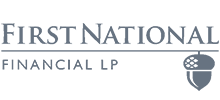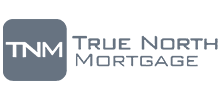 Homebuying
HomebuyingEverything you need to know about portable mortgages
This article has been updated from a previous version. You know how when you move, you take almost everyth...

On average, Canadians save thousands of dollars per year by comparing rates with us.
Compare mortgage rates from 50+ of Canada's leading banks and brokers in just 3 minutes.
No rates match your criteria.
Get the money you want for the things you need with a home equity line of credit (HELOC).
HELOCs allow borrowers to tap into the equity they have in their homes. This gives them access to additional funding that they can put towards other expenses. Plus, HELOCs often come with flexible monthly payment schedules.
If you need to access cash quickly to consolidate debts, cover home renovations or pay for your childrens’ education, a HELOC can be a great tool.
A HELOC also allows you to access this funding as you need it, so you’ll only pay interest on the money you’ve borrowed. It’s cheaper than ever to take out a HELOC, and you can compare the best HELOC rates right here at LowestRates.ca.
Get started by selecting a product from our rate chart above.






The short answer is yes. A HELOC is one of a few types of second mortgages. A second mortgage is defined as any mortgage that takes second position to your first mortgage, meaning that if you should default, the loan on your second mortgage will be paid out after the first.
There are two different types of HELOCs — one that’s combined with a fixed term mortgage and one that’s a standalone product.
With a HELOC, the lender allows you to take out a line of credit that lets you borrow against the equity of your home. You can take out as much or as little money as you like as long as you don’t go over your credit limit. This may sound great, but your lender reserves the right to change your interest rates at any time. After you’ve repaid the loan, you can borrow more money without having to take out another loan. It’s a revolving line of credit, like a credit card. And not unlike a second mortgage, the equity in your home guarantees the HELOC loan should you stop making payments.
Yes, there are two types of HELOCs for Canadians to choose from.
HELOC combined with a mortgage: Many financial institutions will offer a HELOC combined with a mortgage. This is also known as a re-advanceable mortgage. This type of HELOC combines the home equity line of credit with a fixed term mortgage. The borrower will usually only pay interest on the money they use.
The fixed term mortgage contract the borrower has with their lender will have an amortization period.
HELOC as a substitute for a mortgage: In some cases, a standalone HELOC can be used as a substitute for a mortgage. If you choose to buy a home with a HELOC instead of a traditional mortgage, you’re not required to pay off the principal and interest on a fixed payment schedule. However, you must be able to make a higher minimum down payment (at least 35% of the purchase price). Choosing this method can offer flexibility and allows you to pay off the balance ahead of time without suffering a prepayment penalty.
In Canada, you can access up to 65% of the value of your home through a HELOC, and you can withdraw funds as needed. Your outstanding mortgage loan plus the value of your HELOC can’t equal more than 80% of the value of your home.
With a HELOC, you can’t access all the credit at the same time. Rather, you can use as much or as little of the equity as you choose and you’ll only pay interest on the amount you withdraw. This is also known as a revolving line of credit.
HELOC rates are typically higher than the variable mortgage rate, though different lenders can have different interest rates depending on how their products are set up.
HELOC rates can vary depending on how your lender sets them up. They will usually have a variable interest rate based on your lender’s prime lending rate.
Remember, the prime lending rate is set individually by each financial institution as a starting rate for their variable loans, such as mortgages and lines of credit.
A HELOC will often have an interest rate that’s slightly higher than your mortgage rate. This is because HELOC rates are usually set at the prime rate plus a number. Your HELOC rate will differ depending on the lender you use.
For most of 2019 and throughout the first part of 2020, variable rates and fixed rates have both hit historical lows in Canada, and recent Bank of Canada rate cuts have pushed rates even lower. While HELOC rates will likely be higher than your mortgage rate, they’ll probably be lower than your traditional line of credit.
It’s important to remember that your lender technically has the right to change your HELOC rate at any time.
There are several advantages to applying for a HELOC, including easy access to credit and lower interest rates than other types of credit. Here are some of the other benefits of a HELOC in Canada:
Easy access to credit: One of the primary features of a HELOC is that you can access funds whenever you need them.
Lower interest rates: A HELOC will often come with lower interest than other types of credit, particularly unsecured loans and credit cards.
Interest: You only pay interest on the amount you borrow
No prepayment penalties: You can pay back the money you borrow at any time without incurring a prepayment penalty.
Debt consolidation: You can also use a HELOC to consolidate your debt, sometimes at a lower interest rate.
Other forms of credit: When combined with a mortgage, a HELOC can include other forms of credit under a single credit limit. Some of these products include: personal loans, credit cards, car loans and business loans.
While there are a number of benefits to taking out a HELOC, there is no such thing as a perfect financial product. Therefore, it’s also important to also highlight the drawbacks.
Easy to lapse on payments: One of a HELOC’s greatest advantages can also be its greatest drawback. Because you’re only required to pay monthly interest, they can require discipline to pay off.
Debt buildup: While having revolving credit can be a huge asset, it can also make it easier to spend more. Many people who take out HELOCs wind up carrying debts for long periods of time.
Makes it harder to move your mortgage: In order to switch your mortgage to another lender, you may have to pay off your full HELOC and any credit products you have associated with it.
Other things: A HELOC also shares a number of disadvantages with similar loan products. For example, variable interest rates can change, your lender can reduce your credit limit at any time, your lender has the right to demand you pay the full amount at any time, and your credit score may decrease if you don’t make the minimum payments.
Just like with any financial product, it’s critical to understand the extra fees you might have to pay. Fees that you might pay on a HELOCinclude:
Home appraisal or valuation fees: your lender charges this fee to send someone to your home to assess its value.
Legal fees: You’ll want to contact a lawyer or title service company to register the collateral service charge on your home.
Title search fees: Another type of legal fee to ensure there are no liens in your home.
Administration fees: Often charged by your lender for the management of your account.
Credit insurance fees: You may choose to pay additional premiums for different types of insurance on your HELOC, including life, critical illness, disability and job loss insurance.
Discharge or cancellation: Your lender will charge this fee if you choose to cancel your HELOC and remove the collateral charge from the title of your home.
In Canada, you can access up to 65% of the value of your home through a HELOC. However, there is one caveat. Your HELOC plus the outstanding principal on your mortgage loan balance cannot equal more than 80% of your home’s value.
To calculate how much equity you have to work with, start by taking the value of your home and multiplying it by 80%. Then, subtract the remaining principal on your home.
For example, if the value of your home is $500,000, and you’ve paid off $110,000, you can take out up to a $290,000 line of credit ($500,000 x 0.80 - $110,000).
When you pay back the money you withdraw from your HELOC, you’ll have to pay it back plus interest.
Lenders will consider many of the same factors they would if you were applying for another type of loan or credit. Some of these include:
Minimum down payment: You’ll need a minimum down payment of 20% on your home if you’d like to combine your HELOC with your mortgage. If you’d like to use a HELOC as a substitute for a mortgage, you’ll need a down payment of 35%.
Credit score: You’ll also need an acceptable credit score. What’s “acceptable” will depend on the lender you’re working with.
Stable income: To qualify for a HELOC, you’ll need proof of a stable and regular income.
Low debt-to-income ratio: You’ll need a low debt-to-income ratio. This ties in to the bank ensuring you earn enough each month to make your payments.
Stress test: At a bank, you’ll need to pass a “stress test” in order to qualify for a HELOC. You’ll need to prove that you can afford the minimum payments at a qualifying rate, which will likely be higher than the actual HELOC rate. The bank must use the highest interest rate of either, the conventional five-year mortgage rate or the interest rate you negotiate with your lender plus 2%.
Proof of home ownership: If you own your home and want to use the equity in your home to get a mortgage, you’ll also need to prove that you own your home, you’ll need to provide your mortgage details and let your lender assess your home’s value.
There are a number of things your lender will consider when determining your HELOC rate. Some of these things are within your control, while others are harder to influence. Here are some examples:
Your credit score: The best way to improve your credit score is to make payments regularly and on time to build up a history of being a reliable borrower.
Your income stability: This is one of those factors that’s harder to control. Your income stability will largely depend on your profession and the stage of your career.
Your net worth: Your net worth can be calculated as the total value of your assets minus your debt. One quick way to increase your net worth is to pay off all your debt, though we know for a fact that this is no easy task.
Your home’s price: The price of your home will inevitably contribute to the HELOC rate your lender is willing to offer you.
Comparing the market: The best way to secure a great rate on a number of financial products — including a HELOC — is to shop the market to see what’s out there. Different lenders may offer you a different rate depending on their own internal data.m
There are a number of features you can add to your HELOC that might be worth looking into. Here are some examples:
Minimum and maximum amounts: While the minimum amount for a HELOC might vary from bank to bank, the maximum HELOC amount is calculated as 65% loan-to-value of your home ratio, as was demonstrated in the example further up in the page.
Revolving balance: HELOCs are often described as having a revolving balance. This means the holders can borrow multiple times up to the permitted credit limit. As the equity in your home grows, you can also increase the credit limit.
Sub-divide lines: Sometimes, it’s possible to divide your HELOC into different sub-accounts to better track the use of your credit.
Option to convert to fixed: You’re sometimes able to convert the outstanding borrowed HELOC funds to a fixed rate, which you’ll then pay back like a standard mortgage.
Second position HELOC: This means that borrowers are allowed to hold their mortgages with one bank and their HELOCs with another. The term “second position” refers to the HELOC’s position. Basically, your mortgage lender will be compensated first if you should default on your payments, because this lender holds the “first position” Your HELOC lender will be compensated second. This is also why HELOCs usually have higher interest rates than mortgages — because it’s assumed that they will be in second position and are therefore a higher risk to the lender. It is possible to have your HELOC in first position, but it’s uncommon unless you’ve purchased your home with a HELOC.
On LowestRates.ca, we can connect you with lenders who offer HELOC products in just a few minutes. If the bank you currently hold your mortgage with isn’t on the list, don’t despair. You’re often able to hold a HELOC account with one lender and your mortgage with another. All you have to do is fill out the form above to be matched with a lender in your area.
 Homebuying
HomebuyingThis article has been updated from a previous version. You know how when you move, you take almost everyth...
 Homebuying
HomebuyingThis article has been updated from a previous version. If you decide to break your mortgage, w...